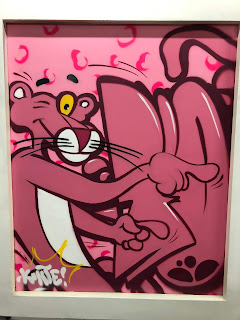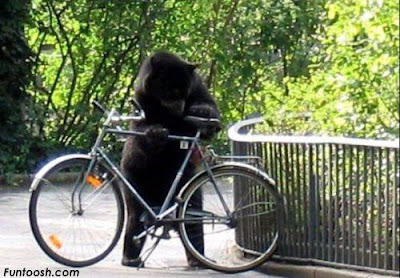I'll admit that I've spent time looking at dying leaves, I mean, fall foliage. This year it seems late in coming--or, at least, a little less colorful than usual. I'm seeing fallen leaves in bike paths, on sidewalks and in other spots, but the leaves still on trees are green.
More noticeable signs of fall came, for me, on my ride to Point Lookout yesterday.
The reeds on the islands, and the plant life on the shore, never fail to reflect the season's colors.
Even more reliable, to my eyes,is the light surrounding them--especially on overcast days. Clouds gather and seem to take on the depth of the sea; the sea and sky darken without actually becoming dark. Yet the reeds and grasses stand, even as they age and turn sere.
Each of them stands alone.
I took a brief ride the day before, between bouts of torrential rain. Ironically, I saw more color on one corner in Harlem than on my longer ride.
Looking at this building, you might guess that it's a studio or gallery. The latter assumption would be correct: All of the work on the walls is done by local artists. But this building serves another function. Can you guess what it is?
Believe it or not, it's a pediatrics office. Pediatrics 2000, to be exact. Two doctors, as well as nurses and other professionals who help children, practice there.
Kids actually enjoy going there. Their parents seem to like it, too. The art is one reason. Another is this:
There are no stairs anywhere in the building. Only ramps connect the levels. So, no kid (or adult) is stigmatized for being in a wheelchair.
The best thing is that everyone seems to think as highly of the doctors and other professionals in that building as they think of that building itself.
The kids get culture while doctors take their cultures. It sounds good to me!
More noticeable signs of fall came, for me, on my ride to Point Lookout yesterday.
The reeds on the islands, and the plant life on the shore, never fail to reflect the season's colors.
Even more reliable, to my eyes,is the light surrounding them--especially on overcast days. Clouds gather and seem to take on the depth of the sea; the sea and sky darken without actually becoming dark. Yet the reeds and grasses stand, even as they age and turn sere.
Each of them stands alone.
I took a brief ride the day before, between bouts of torrential rain. Ironically, I saw more color on one corner in Harlem than on my longer ride.
Looking at this building, you might guess that it's a studio or gallery. The latter assumption would be correct: All of the work on the walls is done by local artists. But this building serves another function. Can you guess what it is?
Believe it or not, it's a pediatrics office. Pediatrics 2000, to be exact. Two doctors, as well as nurses and other professionals who help children, practice there.
Kids actually enjoy going there. Their parents seem to like it, too. The art is one reason. Another is this:
There are no stairs anywhere in the building. Only ramps connect the levels. So, no kid (or adult) is stigmatized for being in a wheelchair.
The best thing is that everyone seems to think as highly of the doctors and other professionals in that building as they think of that building itself.
The kids get culture while doctors take their cultures. It sounds good to me!





















